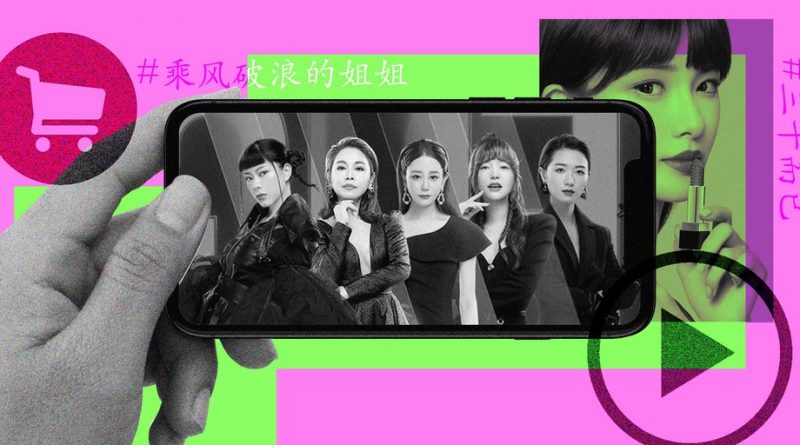How Fashion Can Tap Into China’s Latest TV Craze | BoF Professional, China Decoded
LONDON, United Kingdom — Every Friday since June 12, hundreds of millions of Chinese viewers have tuned in to Chinese streaming platform Mango TV’s new hit programme, Sisters Who Make Waves. The show, a knockout-style singing competition, goes against the entertainment industry’s ageist grain by featuring 30 older, established female artists rather than undiscovered starlets. Within three days of the programme’s premier, it already raked in 370 million views.
Soon after the credits roll each week, social media platforms like Xiaohongshu and Douyin are flooded with content recreating contestants’ beauty and fashion looks. From videos revealing their exact lipstick shades to serums and face massaging devices credited for actress and participant Ning Jing’s age-defying looks, China’s latest pop culture obsession has cemented itself as a sales-driving hot topic for largely domestic fashion and beauty players. International brands, however, have been slower to take advantage of this marketing opportunity.
In a market where content and commerce have become virtually inextricable, it was only a matter of time before television shows came to the fore. “China has seen rapid growth in [its] entertainment and media industry in recent years,” said Arnold Ma, founder and chief executive of China-focused digital agency Qumin. Programmes have grown from entertainment to “multi-channel brands,” said Ma, spanning TV, video, e-commerce, live commerce and new media formats.
Mainland programmes have begun to rise in the estimation of style-conscious Chinese consumers.
“This is important for western brands to understand, because the distinction between content and commerce has never been closer,” he added. But like most of the platforms and formats that populate the mainland’s saturated digital ecosystem, making an impact with some of the market’s estimated 854 million (and counting) internet users can be a costly and complicated endeavour.
The Shows to Know
Television and streaming platforms are yet another expressway into the country’s influencer economy, which drove $4 billion in sales in 2018 according to influencer company Ruhan. Once lamented as tasteless by local media outlets, mainland programmes have begun to rise in the estimation of style-conscious Chinese consumers.
“The truth is that magazines are no longer popular in China, and have lost their authority even among the wider fashion set,” said Maggie Ma, founder of Shanghai-based showrooms Looknow and Creator’s Showroom. Social media platforms — from WeChat, Weibo and Xiaohongshu to Douyin and Bilibili — has become a more accessible point for consumers to track trends and products via recommendations from key opinion leaders (influencers known as “KOLs”) and channel-specific fashion subscriptions.
Though there are plenty of platforms through which brands can work with KOLs, few are as high-octane or will be seen by a larger audience than that of television and streaming programmes. This is thanks in part to Covid-19: during Chinese New Year, China’s TV and streaming viewership surged 33 percent and 17.4 percent respectively, according to a report released by entertainment platform Maoyan Zhiduoxing.
For deep-pocketed brands, there are plenty of dedicated fashion and beauty programmes that can bolster sales for everything from lipstick to breakfast cereal.
Take Fourtry, a hit streetwear-focused show by Netflix analogue iQiyi that featured celebrities like Dior ambassador Angelababy and Louis Vuitton favourite Kris Wu, who has since jumped ship to join Tencent Video’s programme Where Are the Trendsetters? and will compete with other A-listers to launch their own fashion brands. The show inked more than 40 partnerships during its first season with the likes of Lancôme and Ikea.
Meanwhile, Alibaba owned-Youku has 720 Trend Manager, which puts its stars on a 720 hour deadline to curate a fashion showroom. Crazy Wardrobe helps audience members with their styling questions and has been known to boost sales for brands, said Ma. Mango TV’s ‘I’m a Beauty’ consults KOLs and celebrities to help viewers with their fashion and beauty woes. “All beauty products introduced in the show can be purchased on WeChat and brand’s official websites, which provides audience [members with] a one-stop instant shopping experience,” said Ma.
Then there are a host of programmes not specifically about fashion, beauty or style, which can just as easily boost sales if an actor or guest sports an eye-catching item or makeup look. Last month, Women’s Wear Daily reported that a scene from local drama Nothing but Thirty — in which its protagonist was ostracised by fellow wealthy housewives for carrying a Chanel bag rather than a Hermès Birkin or Kelly — resulted in a “viral moment” for the latter luxury house though neither brand was named explicitly.
Global brands in other categories already engage with China’s television programmes, as they can afford to. 720 Trend Manager has been tapped by the likes of Peugeot and e-commerce powerhouse Tmall, which launched a flagship store selling products featured on the show. Fourtry, now in its second season, has both an online and offline store — shoppers reportedly queued outside its Shanghai location for six hours to nab the latest drop.
Pay to Play
For brands to ink deals with programmes with such reach is expensive. Apart from the biggest global fashion and beauty players, few have marketing budgets that would stretch to this level of investment. Outfitting a whole cast of celebrities on a leading show — like Keep Running, the top-ranking celebrity variety programme modelled after Korea’s Running Man — can cost upwards of ten million yuan (around $1,439,823), said Ma, founder of Creator’s Showroom.
Ma has worked with both editorial and celebrity stylists, including on shows like Sisters Who Make Waves. But as her showroom largely represents emerging brands like homegrown jewellery players Lin and Mistova, she has gone down a different route of lending pieces to celebrity stylists she has built relationships with over the years by charging a small fee for delivery and cleaning to cover her costs.
“It is definitely not a rate you’d get from a typical PR company, because the designer brands we currently work with are still young, like us,” Ma said. Because the brands she works with are generally pricier than mass-market options, the most that Ma has seen items sell at is in the hundreds. But for a young brand, even a hundred units can be a windfall.
For deep-pocketed brands, there are plenty of dedicated fashion and beauty programmes that can bolster sales.
“If the stylist and celebrity like the look, the payback is huge,” she added. “You get endorsement, great content for social media and increased sales. It’s a small price to pay for fame and fortune.”
Even so, challenges await brands that don’t have sufficiently strong supply chains to support an uptick in demand (which for younger brands is the norm). “When sales increase, items sell out quickly,” said Ma. Moreover, designers have to keep up the momentum and make the most out of a sudden spike in interest.
What’s more, those that rely on star power for exposure without carefully considering brand alignment can be at risk of losing their brand identity and direction to appease the masses.
Accessible Marketing Options
Access is of course key. It helps to know the top stylists that have worked on television programmes, such as Mix Wei — who, alongside styling celebrities like Angelababy and Gong Li, has worked on shows like the country’s Sex and City analogue Ode to China and singing competition The Voice of China — and Li Hui, a fashion media veteran who did a stint as the fashion director for romantic comedy One Night Surprise.
But brands don’t have to work directly with a show or celebrity stylist to leverage the buzz surrounding a hit show. Staying up to date with the relevant programmes and what actors are wearing can allow a brand’s social media teams to curate relevant styles for their followers.
But for those looking to get their products on a particular programme or actor, not all shows are equal. “We consider more TV dramas because the cycles and seasons are longer,” said Creator’s Showroom’s Ma. “Variety shows don’t air for as long, especially if there are eliminations involved.”
When working with a show, which like Fourtry has its own online and offline e-commerce channels, brands need to ensure that their own retail touchpoints are up to scratch. Digging into the network or platform’s audience is vital: Nothing but Thirty is more mature, largely female audience could produce results for anti-ageing skincare, whereas Fourtry would be a top pick for a sneaker label.
Streaming will play an important in the marketing mix for fashion and beauty players in the years ahead.
When it comes to dressing specific celebrities, brands shouldn’t necessarily limit their search to A-list stars — even if they can afford them. “Bigger celebrities sometimes have a smaller impact on sales,” said Ma. “Fans of top TV drama actors are smart and won’t blindly buy whatever they see them wear on screen.”
On the other hand, smaller or up-and-coming talents often boast bigger, younger social media followings. Ma has been caught off guard in the past, where she wasn’t aware of the extent of an actor’s star power until the brand’s social media channels began blowing up.
It is important to also note that despite the increasing overlap between luxury fashion and China’s celebrity economy, the way A-listers are styled for television hasn’t quite caught up, said Creator’s Showroom’s Ma. Save for Wei and Hui, many top stylists have yet to venture into the television space beyond working with single clients on variety shows. But Luna Jia, who has been working as an in-house stylist at both Looknow and Creator’s Showroom for a year on editorial, celebrity and television projects, reckons that the TV styling space will only get more crowded as platforms continue pumping out hit shows.
“The concept of a television show has changed — new styles and formats exist now, which will mean a large uptick in demand for our work,” Jia told BoF.
Often, only the top actors and guests can bring in their own styling teams. “Many stylists on TV dramas are old school and can’t produce cutting edge looks,” Ma added. This stands in stark contrast with television styling in South Korea, where actors in popular dramas have been known to sport brands like Celine and Jimmy Choo on the regular.
However, Ma is hopeful that the mainland’s entertainment industry is catching up. “I hope that more stylists, aside from focusing on editorial jobs, will work on shows and drama styling. It’s a win-win situation, really.”
If, as Ma expects, more shows do secure better styling and art direction, then China’s TV and streaming medium will have an even greater role to play in the marketing mix for fashion and beauty players in the years ahead.
时尚与美容
FASHION & BEAUTY
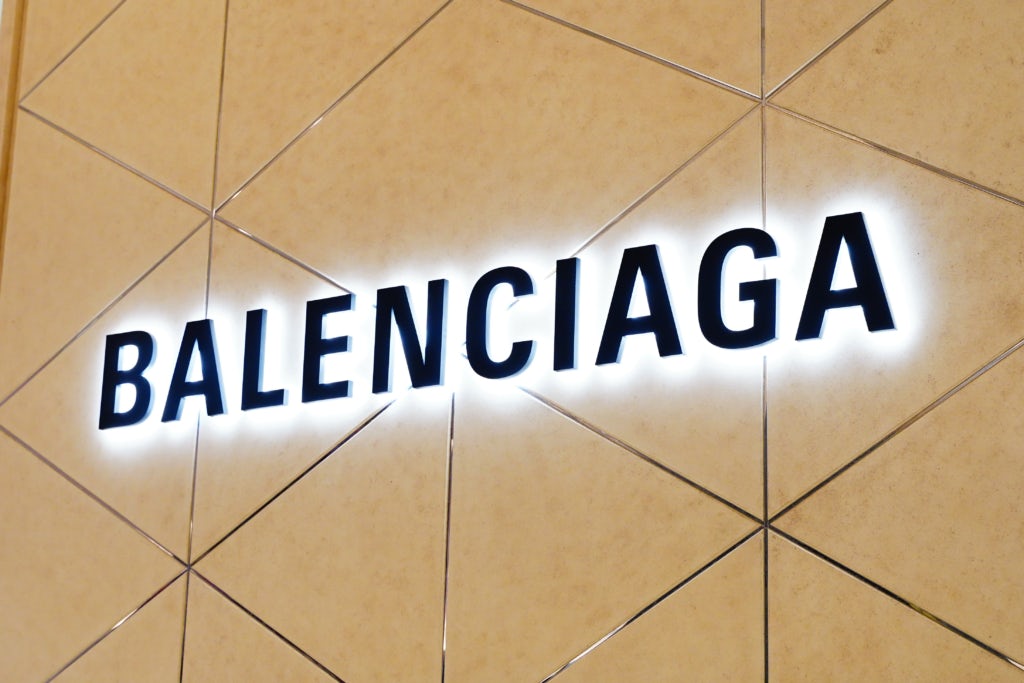
Balenciaga sign | Source: Shutterstock
Balenciaga Faces Backlash for Qixi Ad Aesthetic
The fashion brand’s campaign for Chinese Valentines Day hit a nerve with some netizens, who deemed the lo-fi, so-called “Too Cool” (a homonym for tuku, or intentionally tasteless) styling and design of four limited-edition handbags insulting. The bags, sprawled with phrases like “he loves me,” have been interpreted as a nod to fashion beloved by China’s rural population, and by Tuesday night the hashtag “Balenciaga’s tasteless Chinese Valentine’s campaign” drew over 210,000 mentions and 170 million views on Weibo, with some calling for a boycott. This isn’t Balenciaga’s first brush with backlash in its most important market: the brand apologised in 2018 after a video appeared to show a Chinese customer assaulted at the Balenciaga store in Paris’ Printemps department store. (Jing Daily)
Louis Vuitton’s Shanghai Show Draws Fifty Million Hits
The French luxury brand, which took its first offline show to Shanghai since Covid-19 upended the industry calendar, showcased its Spring/Summer 2021 menswear collection by Virgil Abloh on the likes of local brand ambassador Kris Wu. Louis Vuitton livestreamed the event on platforms like Douyin, Weibo, its WeChat mini programme, with views and likes on Weibo exceeding 50 million and 320,000 likes respectively. The collection — which designer Walter Van Beirendonck later called out as “shocking” for copying his own designs — is slated to be shown again in Tokyo this September. (Irina Li for BoF China)
Burberry CEO Remains Hopeful as Hong Kong Retail Suffers
The British luxury player’s Chief Executive Marco Gobbetti is positive that the erstwhile luxury hub will recover from months of hardship, but is staking bets on neighbouring Shenzhen to be safe. “Hong Kong has an incredible energy to bounce back and rebound. Of course we will have to look at our retail footprint if tourism from China will be severely impacted for a long time,” he told the SCMP. This month, Burberry opened a “social retail” store in Shenzhen in partnership with WeChat owner Tencent, which boasts social media and gaming functionality. Meanwhile, a third wave of coronavirus in Hong Kong and socio-political strife in the wake of Beijing’s national security law has prolonged retailers’ woes. Just this week, department store Sogo announced that sales in its Causeway Bay and Tsim Sha Tsui locations dropped 50 percent and 70 percent in the first half of the year, respectively. (SCMP)
科技与创新
TECH & INNOVATION
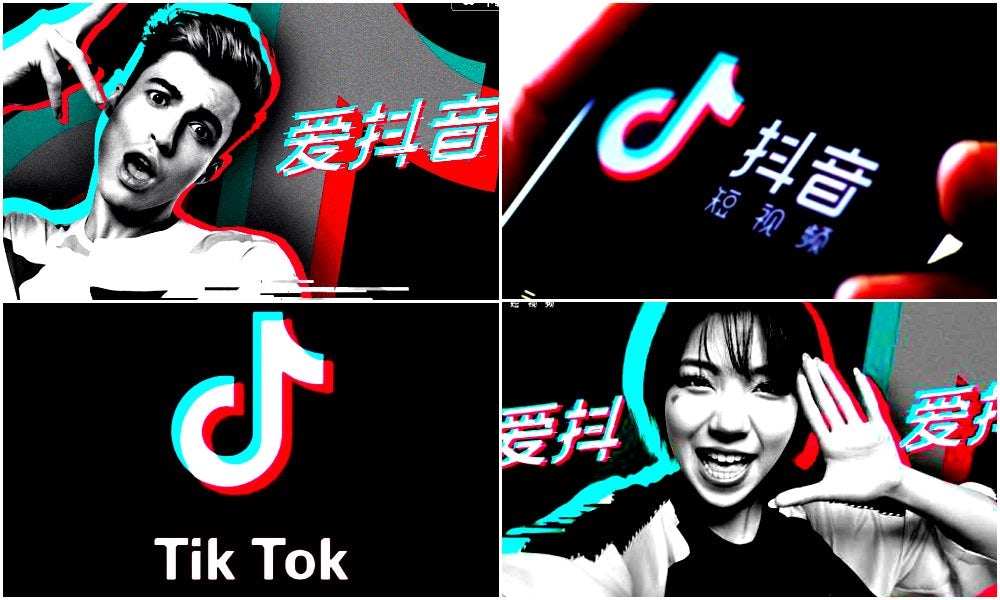
Bytedance-owned Douyin, the Chinese counterpart to Tiktok | Source: Courtesy
Douyin Amps Up Supervision Over Beauty Content
Beauty has long been a hot category among the mainland’s host of livestream and short video apps, but regulation around monetisation and third party retailers has been slow to catch up. In a statement published last week, it was announced that from August 6, TikTok’s sister app would strengthen controls over beauty-related content to protect consumers by requiring third party retailers to receive verification in order for direct orders to take place through video content. If these rules are violated, Douyin may block retailers from its product sharing functionality. (Douyin Bar)
Pinduoduo Launches Fashion Mini Program
This week, Pinduoduo — the controversial hit group buying platform making up China’s e-tail trifecta alongside Alibaba and JD.com — launched Duochao: a digital fashion community housed in WeChat’s mini programme ecosystem. Though the program hasn’t introduced e-commerce functionality, a roll-out is expected by local media outlets. The move signals Pinduoduo’s goals to boost user engagement among younger consumers as its growth slows: active buyers in the year ended March 31, 2020 hit 628.1 million, a year-on-year jump of 42 percent after 50 percent annual growth recorded a year earlier. The likes of Nike and Y-3 have already launched their official accounts. (Technode)
消费与零售
CONSUMER & RETAIL
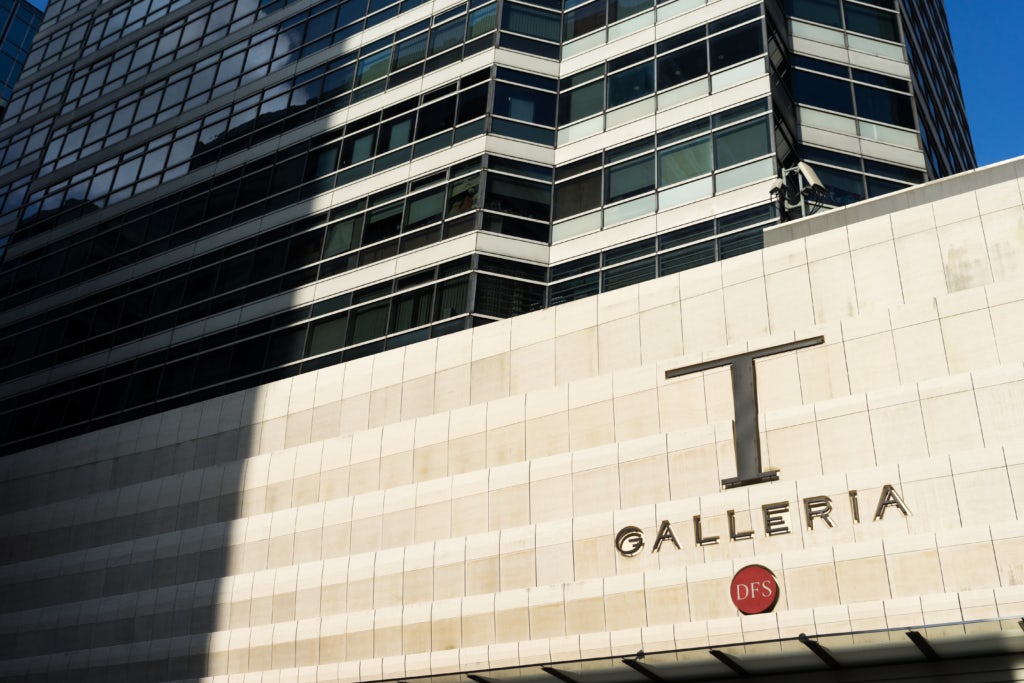
T Galleria is part of DFS Group Limited | Source: Shutterstock
Duty Free Giant DFS Bets on Shenzhen
The Hong Kong-based, LVMH-owned duty free player DFS is now the second largest shareholder in the e-commerce arm of Shenzhen Duty Free Co., a Chinese state-owned duty free product provider. DFS claimed a 22 percent stake in the business, while the provider owns a 40 percent stake. Further details regarding the transaction have not been disclosed. Though China continues to recover from Covid-19, international travel remains at a standstill — DFS’ investment in e-commerce seeks to strengthen its digital capabilities in a post-pandemic landscape. (Winshang)
Drugstore Giant’s Sales Dropped 10 Billion in H1 2020
CK Hutchison Holdings Limited — the Hong Kong-based parent of Watsons, the world’s largest health and beauty retailer — reported the latter’s financial results late last week. The figures revealed that Watsons’ global sales during the period fell 11 percent year-on-year, whereas sales in China fell 30 percent year-on-year. CK Hutchison acknowledged that the pandemic has hit Watsons the hardest, despite having invested $1 billion HKD (around $129 million) on digitisation over the last eight years. (CBN Data)
Uniqlo Gears Up For Opening Spree
The Japanese fast fashion maker isn’t slowing down. Rather, it will open 19 new stores in mainland China on August 14 alone. These new locations include spaces in Shanghai’s Shiji Bailian Shopping Centre and Chengdu’s Ito-Yokado department store. The brand’s recovery is going smoothly: data released by owner Fast Retailing revealed that sales rebounded in July, with both online and offline transactions increasing 4.7 percent and same-store sales in its native Japan jumping 4.4 percent year-on-year. (Linkshop)
政治,经济与社会
POLITICS, ECONOMY, SOCIETY
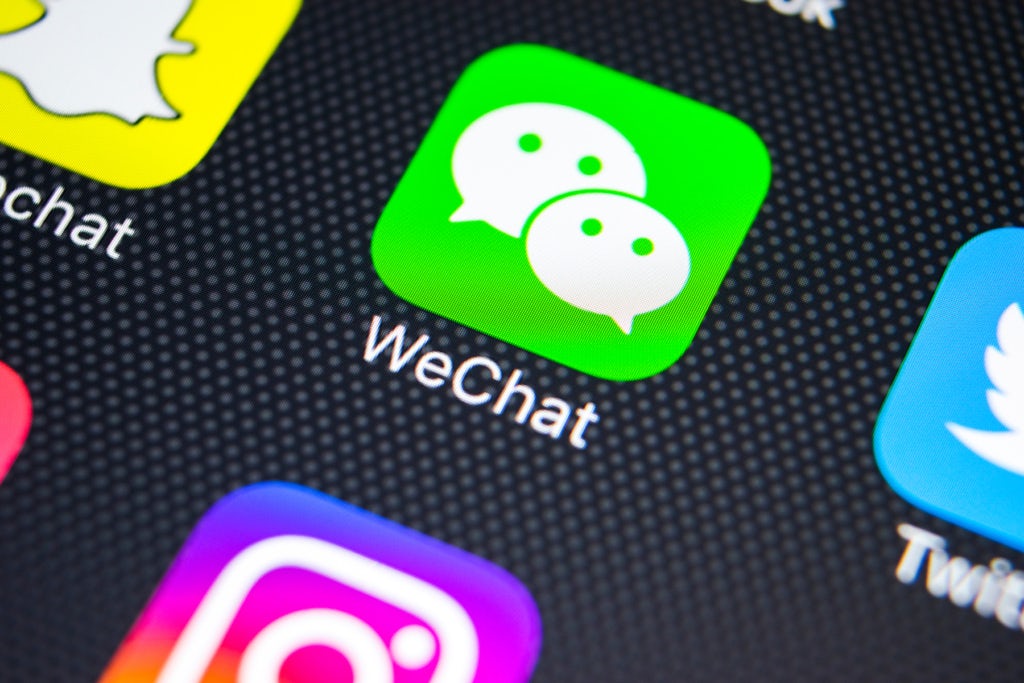
WeChat app | Source: Shutterstock
What Does a US Ban on WeChat Mean for Fashion?
A sweeping executive order issued last Thursday by President Donald Trump banning “super app” WeChat could have major repercussions for American businesses that use it to engage with and sell to over one billion Chinese shoppers. The ban’s scope remains unclear, but brands and agencies around the world are scrambling. The app — which is both a B2B and B2C lifeline to China for fashion and beauty brands as well as PR firms, digital agencies and the like — has become a linchpin of most business strategies. The removal of the app from US app stores could affect Chinese nationals living in the states, while China-based smartphone users may be forced choose between WeChat and the iPhone (Apple relies on China for around 20 percent of its worldwide revenues). The implications for Tencent — which derives most of its revenue from gaming, but would lose a big chunk of valuable data — remain unclear. (Casey Hall for BoF)
ByteDance Valuation At Risk as TikTok Sale Nears
TikTok and Douyin owner Bytedance — which was given an estimated valuation of $100 billion just this year — has been in the hot seat for months as Sino-American tensions fluctuated. But after TikTok lost an estimated third of its user base when it was banned in India, the drama has only escalated following President Trump’s executive order banning transactions with Bytedance starting September 20. Now Bytedance’s $100 billion valuation is at stake as a TikTok sale (Microsoft has been named as a potential buyer) appears more likely, investors told TechCrunch. At present, TikTok only makes up a fraction of Bytedance’s revenues, the latter has only begun to monetise its 2 billion (and counting) users, and the tech ecosystem is much more crowded and competitive back home. (Techcrunch)
China Decoded wants to hear from you. Send tips, suggestions, complaints and compliments to our Shanghai-based Asia Correspondent [email protected].

